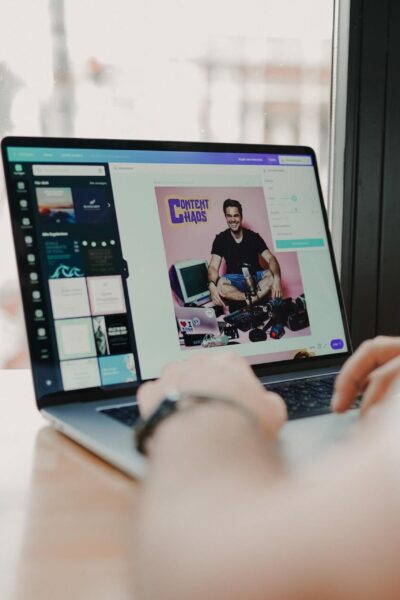Declining ad revenues. Increased competition for subscribers. Fake news. Information overload. Dominance of social media platforms. Distrust of the media.
Grassroots Journalism
British journalist and filmmaker Jake Hanrahan is one such independent journalist, who founded Popular Front. It is described as conflict journalism done differently. It reports on the parts of war big media rarely acknowledges, and talks to people they’ll never find.
“We don’t have corporate bugmen trying to dictate what we do either,” the website states. “This is all independent, funded by members through subscriptions and sponsorship.”
The Independent Media Landscape in a Time of Change
An informed populace is the key to a working democracy, writes Rachel E. Stassen-Berger in a special report for the McKnight Foundation, based in Minnesota, USA. While access to news is greater than ever before in human history, that access has not necessarily kept citizens as well-informed as they deserve and demand.
The report lays out the landscape of independent media in today’s fast-changing landscape, and identifies the major challenges for independent media:
- A clear partisan split in how much Americans trust the news media. Republicans lack trust in the media while Democrats have more trust and confidence — a gap has high as 58 percentage points.
- Fake news, which confuses the media landscape and consumer understanding of news.
- Financial declines and revenue challenges at news outlets and digital publishers.
- An increase in media conglomerates, investment groups or wealthy individuals buying major media properties and nonprofit entities has changed the face of news.
- An increasing percentage of people who say they get their news from social media outlets.
The growth of nonprofit news
One way that we have seen the rise of independent journalism through all these changes is in the large numbers of not-for-profit news organizations that have been created. In 2009, journalists from 27 nonpartisan, nonprofit news organizations gathered at the Pocantico Center in New York to plan the future of investigative journalism.
The result of that meeting was the establishment of the Institute for Nonprofit News — an organization with a mission to strengthen and support more than 250 independent news organizations in a new kind of media network: nonprofit, nonpartisan and dedicated to public service. INN’s vision is to build a nonprofit news network that ensures all people in every community have access to trusted news.
INN believes that nonprofit journalism serves people and communities, and has a unique role because they are created as public trusts with a mission to serve communities’ information needs rather than generate revenue. This builds public trust, equity and inclusion.
Finding and supporting “real news” is like voting, says Sue Cross, executive director and CEO at INN.
“As consumers, we have the ultimate defense: credible news. We can find real news, follow it and support it,” Cross writes. “We’re entering a golden age of grassroots, public service journalism. More than 300 nonprofit, nonpartisan news sites cover the U.S., beholden to no one but the people they report for, responsible for public service rather than profit.
“This is news for the people, with the people. Finding and supporting real news is kind of like voting: it’s one of the best ways each of us can support our own individual rights and pull our country and communities together. Where there is news, research has found the politics are less polarized, government finances stay out of debt, more people run for office, more of us vote. Our right to free speech is upheld, our governments are held accountable.”
Truth-tellers in Crisis
In June 2020 an online event was held, Truth-tellers in Crisis: Protecting Independent Journalism. Speakers included Carroll Bogert, president of The Marshall Project; Nishant Lalwani, managing director at Luminate; and Pavla Holcová, Central Europe Editor for the Organized Crime and Corruption Reporting Project. John Nery, columnist and former editor at Philippine Daily Inquirer, was the moderator. This panel, along with journalists in attendance from around the world, took a deep dive into today’s troubling media dynamics. The panelists discussed the importance of media freedom, the critical role investigative journalists play in uncovering corruption and promoting open societies, and how to promote an independent press when freedom of expression is under threat.
Lost Access to Comprehensive Journalism
The work of independent journalism takes on even more importance as traditional newspapers fold and communities continue to lose access to unbiased news reporting. A University of North Carolina report released in 2018 found that nearly 1,800 newspapers had folded since 2004.
“We can kind of pick up the slack where national media isn’t doing the job they said they want to be doing,” independent journalist Lindsey Gilpin told the Poynter Institute. “Having … more independent journalists that love their region and that are really attached to a place can be a benefit to the industry.”
Gilpin writes a popular weekly newsletter, Southerly, that covers environmental justice in the Southern United States.
Independent Journalism in the Digital Age
In the earlier part of the decade, Open Society Foundations took a look at how many of the world’s journalists are at risk doing their jobs — harassed, vilified, attacked, imprisoned or even killed for uncovering and reporting on news that is absolutely critical to democracy.
The result was the Mapping Digital Media project, one of the largest studies ever completed of its kind, examining 15 of the world’s most populous 20 countries to reveal common themes:
- Governments and politicians have too much influence over who owns the media, who wins licenses to operate newspapers, radio and TV stations, and how the media are regulated—all of which undermines independent journalism.
- Many media markets are not free and fair, but are dominated by a few major players, and are rife with corrupt or non-transparent practices.
- Media and journalism on the internet offer hope of new, independent sources of information, but are also a new battleground for those seeking to control information.
“It’s striking how, across 56 countries of every type and size, these issues crop up again and again: political interference, control or even ownership of the media, lack of affordable access to the internet, declining resources, and worsening labor conditions for journalists,” the report stated.
Content Creators: The New Entrepreneurs
Independent journalism and digital publishing has also given rise to a new breed of reporters: content creators. Independent and nonprofit media are not constrained to telling only news stories, nor to publishing those stories in the traditional text content. Video, audio, and multimedia storytelling continue to challenge traditional word-on-paper (or, increasingly, word-on-screen) delivery.
A content creator is someone who is responsible for the contribution of information to any media and most especially to digital media. They usually target a specific end-user/audience in specific contexts. A content creator can contribute any of the following: blog, news, image, video, audio, email, social updates and other related content.
Sergey Faldin claims that content creation is the job of the future, and that it will take the place of the role of “entrepreneur.”
“What we think of as a profession or a career is quickly changing,” he writes. We live today in the “passion economy” in which virtual goods are exchanged and education has become more accessible than ever before. As the Head of Content for a startup, Faldin says that his job wouldn’t have existed twenty years ago.
“The Passion Economy created a whole new sector of jobs, allowing people to monetize their thoughts, skills, and ideas.”
The Realities of Being an Independent Journalist
Many high-profile journalists have exited legacy media to go solo as their own content creators, launching newsletters and other publications. These entrepreneurs have faced the realities of what it takes to go it alone and generate revenue as an independent journalist.
One such person is Casey Newton, a former editor covering Silicon Valley at The Verge. Newton created his own newsletter, Platformer, which has 30,000 free subscribers and around 1,000 paid subscribers. His goal is to convert 10% of the free subscribers to paid.
Danish media analyst Thomas Baekdal is familiar with some of the pitfalls of going solo, even with big numbers, reports the Media Voices Podcast. He started his site Baekdal.com in 2004, and for six years, monetised it through advertising. By 2010 he had a million visitors per month — but even with that huge subscriber base, he was only pulling in around £200 per month.
So Baekdal changed his model to a reader-revenue hybrid, with a mixture of free articles, a newsletter, and deep-dive paid reports which require a Baekdal Plus membership to access.
Is the “Hollywood Model” the Future of Content Creation?
Every movie is its own separate project that requires its own unique location, set of skills, cast and crew members, etc. Journalist Shane Snow says that the model is the same for content creation.
“In the movie business, each project presents a unique challenge. Meeting that challenge means assembling a team that combines proven coworkers with new talent. I bring this up because I believe that the future of content production is going to look more and more like this model.”
The Hollywood Model gives content creators the greatest chance to tell stories that resonate with their audiences.
10 Biggest Content Creation Trends for 2021
- Topical authority will replace keyword research
- Value-driven content will rise to the top
- Original research will be popular
- Content will become more interactive, engaging, and (hopefully) fun
- Increased adoption of AI
- The user experience will be the differentiator
- Content templates will thrive
- Machine-generated content will be a thing
- The advent of content atomization
- The arrival of Google’s core web vitals
As we move forward into a new year, it’s clear that independent journalism and content creation are not merely new trends, but complete industry evolutions that are here to stay.












